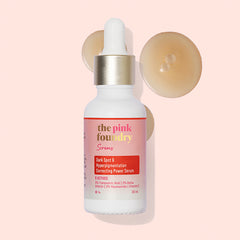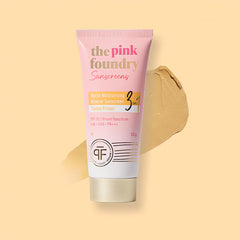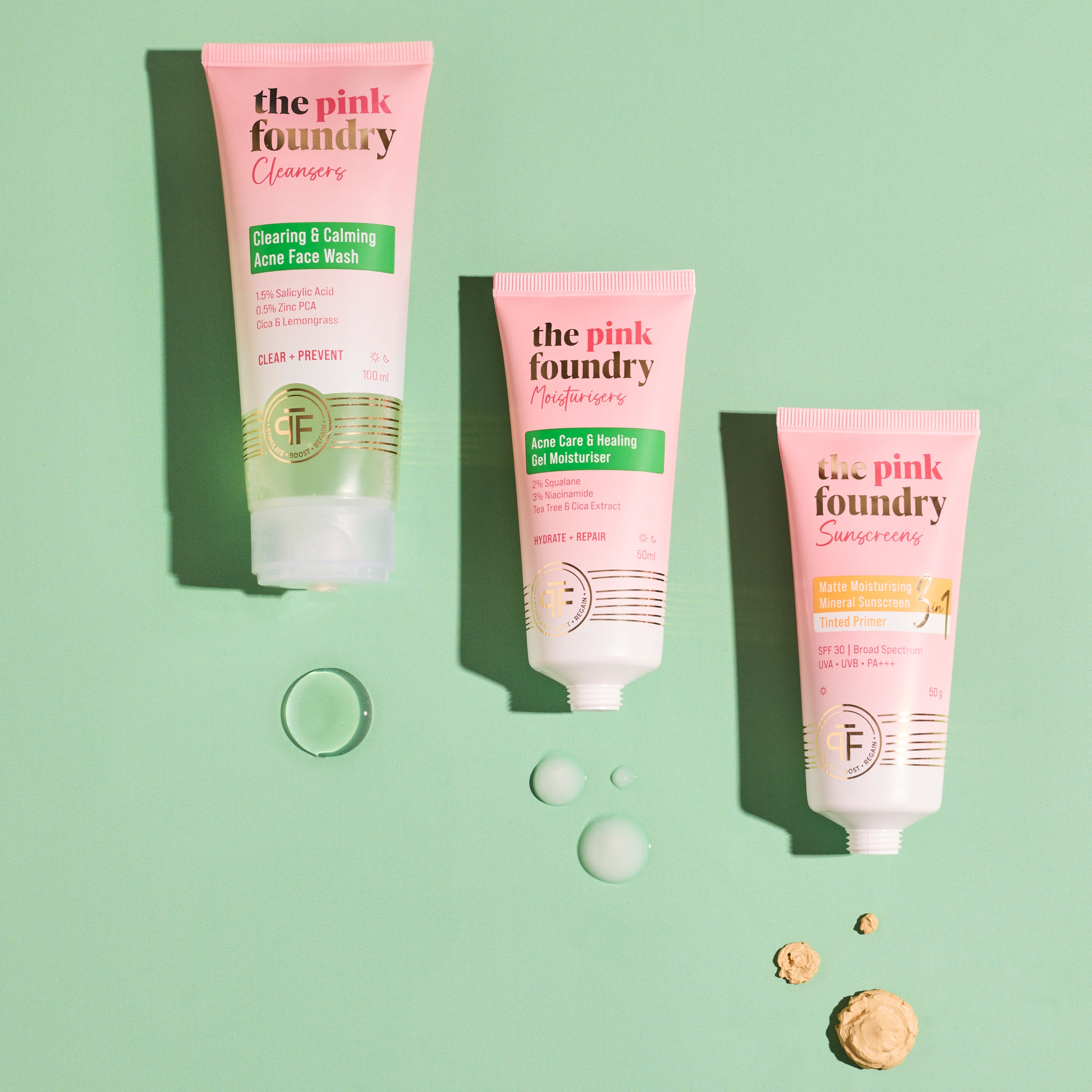Sebaceous Filaments Explained: Causes, Treatments, and Removal Tips
Sebaceous filaments are tiny, tube-like structures that line the walls of your pores. They contain sebum (the skin's natural oil), dead skin cells, and bacteria. These structures are entirely normal and part of the skin's natural function, but they can become visible on the skin's surface, especially in areas with larger pores. When left untreated, sebaceous filaments can give the skin a rough or uneven appearance, leading many to seek solutions.
This article will explore sebaceous filaments, their causes, treatments, and how to effectively manage them at home or with professional help.
Sebaceous Filaments vs. Blackheads
A common misconception is that sebaceous filaments and blackheads are the same. However, they differ in several ways:
- Sebaceous filaments are natural and essential for lubricating your skin, whereas blackheads are acne caused by clogged pores.
- Sebaceous filaments appear as light grey or yellowish dots, while blackheads are darker due to oxidation.
- Unlike blackheads, sebaceous filaments don't form a plug and are not "removable" in the same way. Unlike sebaceous filaments, blackheads form a plug in the pore that can be physically removed. Understanding how blackheads are removed involves manual extraction, chemical exfoliation using salicylic acid, or professional treatments like facials and microdermabrasion.
Common Areas Where Sebaceous Filaments Occur
Sebaceous filaments can show up anywhere you have pores, but they're most noticeable in areas where oil production tends to be higher. These areas are also where sebaceous glands are more concentrated, leading to larger and more visible pores, making it important to first understand what sebaceous glands are. Let's explore these common spots and why they're prone to sebaceous filaments:
1. Nose
The sebaceous filament on the nose is the most commonly noticed. This is because the pores on the nose are naturally more prominent, allowing the filaments to become more visible, especially if your skin is oily. You'll likely see these filaments if you've ever leaned close to the mirror and noticed tiny dots. While they're completely normal, they can make the skin on the nose look uneven or shiny, prompting many people to seek solutions.
2. Cheeks
While sebaceous filaments on the cheek may not be as apparent as on the nose, they can still create a slightly rough or bumpy texture. This is particularly true for people with combination or oily skin types. They're often more noticeable near the area where the nose meets the cheeks, as this zone tends to have larger pores and higher oil production.
3. Chin
Sebaceous filaments on the chin can sometimes be mistaken for acne or blackheads. The chin is another area that produces a fair amount of oil, and constant hand touch or resting your face on your hand can exacerbate the issue. People with hormonal changes or breakouts in this area may also find sebaceous filaments more prominent.
4. Forehead
Although less common, sebaceous filaments on the forehead can appear in people with oily or combination skin, particularly around the T-zone. Although the forehead tends to be less oily than the nose, it can still develop visible filaments in individuals with more prominent pores or an overproduction of sebum.
Causes of Sebaceous Filaments
Several factors contribute to the formation of sebaceous filaments:
- Excess sebum production: Overactive sebaceous glands can fill the pores more quickly.
- Skin type: Oily and combination skin types are more prone to visible sebaceous filaments.
- Improper skincare routine: Failing to cleanse thoroughly or using pore-clogging products can exacerbate the issue.
- Hormonal changes: Hormonal Fluctuations, especially during puberty or stress, can increase sebum production.
Products for Sebaceous Filaments
Using the right products can significantly minimise the appearance of sebaceous filaments. Look for the following:
1. Salicylic Acid for Sebaceous Filaments
Salicylic acid is a beta hydroxy acid (BHA) penetrating the pores, dissolving excess sebum and dead skin cells. Is salicylic acid good for dry skin? Regular use can reduce the visibility of sebaceous filaments on the face.
Note: While salicylic acid is effective for various skin types, individuals with dry skin should use it cautiously. Pairing salicylic acid with a good moisturiser is essential to maintain skin hydration and prevent potential dryness or irritation.
2. Retinol-Based Products
Retinol promotes cell turnover, which helps unclog pores and refine skin texture. It's an effective long-term solution for sebaceous filament treatment.
3. Clay Masks
Clay masks, such as those containing kaolin or bentonite, absorb excess oil and impurities, making them ideal for targeting sebaceous filament on the nose and other oily areas.
Sebaceous Filaments Treatment Options
Addressing sebaceous filaments requires consistent effort. Here are some at-home and professional treatment methods:
At Home
- Use Chemical Exfoliants Like Salicylic Acid- Incorporate a product with salicylic acid for sebaceous filaments into your routine. A serum or toner applied daily can prevent build-up.
- Incorporate Gentle Physical Exfoliation- Avoid harsh scrubs that can damage the skin. Instead, use a soft brush or silicone exfoliator for manual cleansing.
- Use Non-Comedogenic Moisturizer- Hydrating your skin is crucial. Choose lightweight, non-comedogenic products to prevent clogging your pores.
In-Clinic Treatments
- Professional Facials with Extraction: A licensed esthetician can manually extract sebaceous filaments safely and effectively.
- Microdermabrasion or Chemical Peel: These treatments exfoliate the skin deeply, improving texture and reducing the appearance of sebaceous filaments on the face.
Sebaceous Filaments Prevention Tips
Preventing sebaceous filaments from becoming overly visible requires a consistent skincare regimen. Here are some tips:
- Cleanse Regularly: Wash your face twice daily with a gentle cleanser or face wash for sebaceous filaments.
- Avoid Over-Cleansing: Stripping your skin of natural oils can lead to overproduction of sebum.
- Use Sunscreen: UV exposure can worsen pore visibility. Apply a non-comedogenic sunscreen daily.
- Incorporate Salicylic Acid into Routine: Products for sebaceous filaments containing salicylic acid are particularly effective.
Conclusion
Sebaceous filaments are a natural part of your skin's ecosystem and cannot be permanently removed. However, with proper care and the right products, you can minimise their appearance and achieve smoother, healthier-looking skin. Regularly using sebaceous filaments treatment at home and considering professional options as needed will keep your skin in its best shape.
FAQs
Are sebaceous filaments normal?
Sebaceous filaments are a normal part of the skin's oil production process. Everyone has them, but they may be more visible in individuals with oily skin.
Are sebaceous filaments and blackheads the same?
No. Blackheads are a form of acne caused by clogged pores, while sebaceous filaments are a natural feature of the skin.
Can sebaceous filaments be permanently removed?
No, sebaceous filaments are part of your skin's natural function. They can be minimised but not eliminated.
Is salicylic acid effective for sebaceous filaments?
Salicylic acid for sebaceous filaments is one of the most effective treatments for reducing their appearance.
What is the best face wash for sebaceous filaments?
Look for a face wash for sebaceous filaments that contain salicylic acid or gentle exfoliating ingredients to clean pores without stripping the skin.
How can I treat sebaceous filaments at home?
Use chemical exfoliants like salicylic acid, incorporate clay masks, and follow a consistent skincare routine.


















